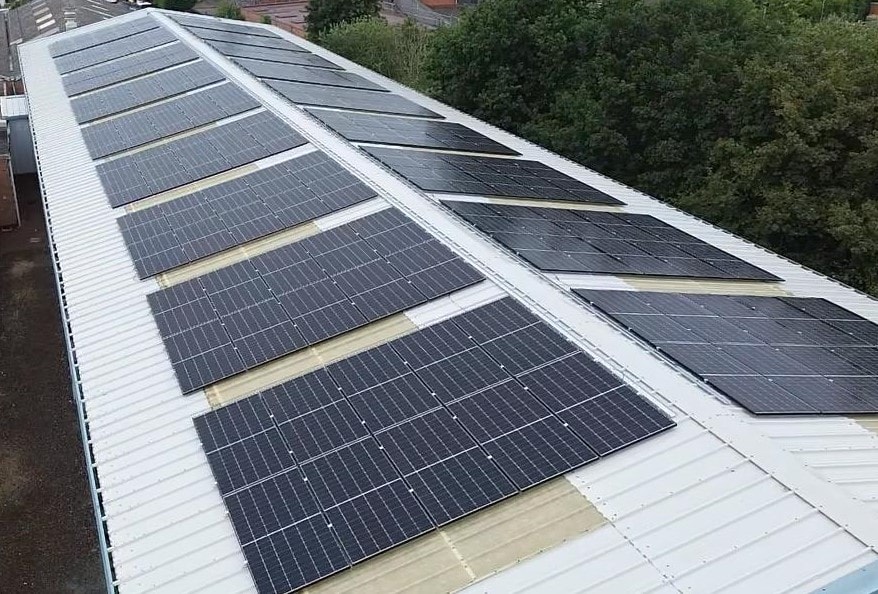
Environmental and Sustainability
Carbon Reduction Commitment
At Talisman Group, we are committed to reducing our impact on the natural world, reducing our contribution to climate change by improving our carbon footprint and creating a more sustainable future.
We support the UK’s ‘Net Zero’ policy ambition, the Greenhouse Gas Protocol (GHG) and the need to decarbonise the plastics sector.
The introduction of our certified Environmental Management System (EMS) confirms our commitment to safeguarding the Environment for future generations and continual improvement of our Environmental performance.
Signing up to the British Plastics Federations “Operation Clean Sweep1” program further cements our promise.
Our CARBON FOOTPRINT is calculated annually2, and includes Scope 1 (direct emissions), Scope 2 (indirect emissions) and Scope 3 (other indirect / value chain emissions).
As well as the organisations CARBON FOOTPRINT reporting, Talisman are also interested in the entire lifecycle of our products and their impact on the Environment, from “cradle-to-grave”. This approach includes product specific considerations, such as: – recyclability of materials, processing waste, any emissions produced during its use and end-of-life solutions.
Carbon Reduction Initiatives
1. Reduce energy / resource usage – utilise renewable grid energy sources.
As an Injection moulder, we understand that our electricity usage contributes significantly to our carbon footprint. With that in mind, energy efficiency is at the forefront of our business plans.
Thanks to significant capital investment, we have purchased a number of energy efficient processing machines to replace older, energy hungry processing equipment.
As part of the Project 25 we now have “Fewer & Newer” moulding machines on site.
In addition, we have switched to renewable grid energy sources and have installed 360 solar panels on our roof-space. We continue to adopt LED / PIR lighting controls across the site.
We utilise a variable compressor for our compressed air and have a centralised Chilled water system.
As part of our commitment to our BRCGS Packaging materials standard and pest control, we have actively reduced air leakage (e.g., doors, windows and loading areas sealed), leading to reduced heating (gas) use. Our EPC rating (C) supports this.
2. Optimise product design & material selection.
Green by Design
During conception and introduction of a new product, we encourage our customers to think of their products as “high value and essential” rather than “low value and disposable”.
We urge them to design for separation and leave materials clear and un-coloured where possible.
We promote the use of ‘readily-recycled’, ‘recycled’ and ‘Bio-based’ product materials, reducing fillers (eg glass fibres) where possible.
We champion the addition of universal recycling icons to help our end users to identify materials.
We urge our customers to reduce material content where possible, by “lightweighting” and promoting “hot-runner” systems. This intent extends to our packaging materials.
Our “Recycled materials” forum allows dynamic discussion on material and product topics.
We work closely with our suppliers to understand the availability of materials and any new innovations, in order to meet the growing demand for recycled materials.
3. Drive down transport impacts.
Where possible, Talisman use the most effective product transport methods, eg: Ship (container), Rail or HGV. We do not commonly use air freight.
We pack our products to minimise our impact on the environment. We encourage re-usable packaging solutions such as plastic totes, where possible. The site uses recycled pallets3 .
We work with our Hauliers, (in conjunction with the RHS) to Improve routing and scheduling to reduce transport distance. We expect our Hauliers & Couriers to maximise their backhaul capacity, to avoid empty running.
Talisman encourage the electrification of vehicles and their use. We have 2 vehicle charging points on our site.
4. Minimise waste (and embodied emissions)
As well as optimising the design; our waste reduction program focuses on minimising waste during the manufacturing process as the cost of waste can be significant to our business.
The program includes elements across the lifecycle of our product (eg: End-of-life solutions).
We follow the waste hierarchy4 wherever possible.
Our Quality focus & improved Housekeeping procedures (as part of BRCGS Packaging Materials standard) also help to reduce waste through:-
- Optimising our production plan (reduced colour / material changes)
- Part weight monitoring (detecting overweighting)
- Recording start-up scrap & purge waste
- Reduce overproduction & remakes
- Process settings & control.
Where waste is not preventable, we minimise our Environmental impact by segregating our waste and re-using waste materials (eg: post-industrial regrind of sprue waste / closed-loop regrinding). We bail our paper, poly & card waste ready for recycling.
We check the validity of our waste carriers as part of our Approved Suppliers process.
1Operation Clean Sweep ® is a global programme to prevent plastic pellet loss into the Environment.
2Results calculated via BPF Energy Carbon Footprint Reporting Tool
3Pallets are brought in to site pre-used (recycled).
4Extract from DEFRA guidance on applying the waste hierarchy.